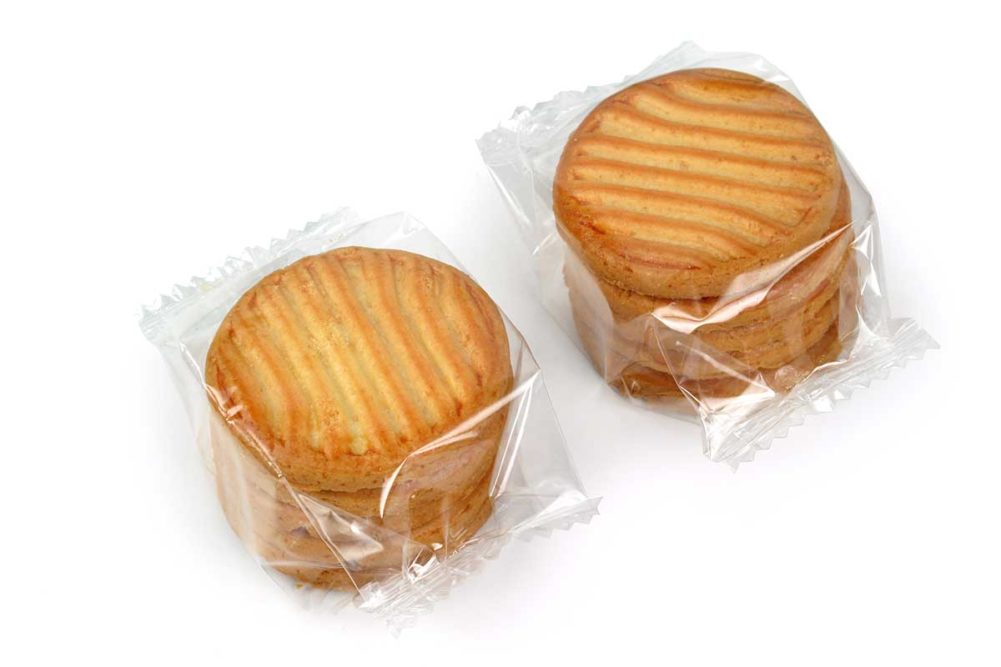Bakeries that decide to add production of smaller or individual cookie packages must also consider their secondary packaging operations.
“As cookie packages get smaller, the demands on both primary and secondary packaging increase,” said Jason Hogue, southeast sales manager, BluePrint Automation. “Processing typically operates at a fixed rate, for example, 500 cookies per minute. Handling a 10-pack at 50 pieces per minute is a lot different than a two-pack at 250 pieces per minute.”
Packaging smaller, individual units means you can generally run the packaging machine faster.
“You’re passing the challenge of that then down to your secondary packaging,” said Josh Becker, bakery segment manager, Harpak-Ulma. “Now you’ve got a higher throughput of primary packages going to your carton or your case packer. Is that capable of running at those high rates of speed? It creates lots of questions. It’s not an easy answer.”
Some of the biggest considerations for a secondary packaging operation going to smaller sizes are ensuring that it’s capable of running different products and that changeovers are easy. He also said that bakers should look at the entire operation to see if any other equipment will need to be adjusted when going to smaller packaging sizes.
“Typically, if you run a bigger bag over a conveyor transfer, you can have a couple-inch gap, and that bag is going to transfer fine,” Mr. Becker said. “But if you’re running an individually wrapped product, and you have an inch gap, is that product going to transfer over? Anytime you go smaller, you have to look at every single transfer from one piece of machinery to the next or one conveyor to the next.”
He also stressed that the key to any packaging operation is how the product’s being presented to the packaging machinery from the upstream process.
Optimizing equipment at all points in production is important to running an efficient operation.
“Make sure that preventative maintenance programs are in place, that operations personnel are appropriately trained and that companies are looking at predictive-type maintenance tools so they can forecast a failure well before it happens,” said Dave Watson, bakery and snack subject matter expert with The Austin Co. “Also, more redundancy. If you do lose a packaging asset, you can quickly switch over to a redundant packaging line sitting there and continue to run without any major downtime.”
The COVID-19 pandemic has forced many bakeries to look at maintenance in a different light because of all the labor and supply chain challenges, Mr. Watson said.
Many maintenance workers have retired or moved on, and bakeries are working to find new people and get them trained properly to troubleshoot problems.
Building flexibility into cookie packaging operations to accommodate smaller pack sizes comes with many challenges, but bakeries that seek out all of the options can figure out the best course of action, whether that includes new equipment or making adjustments to the machinery on the floor.
This article is an excerpt from the November 2022 issue of Baking & Snack. To read the entire feature on Cookie Packaging, click here.





